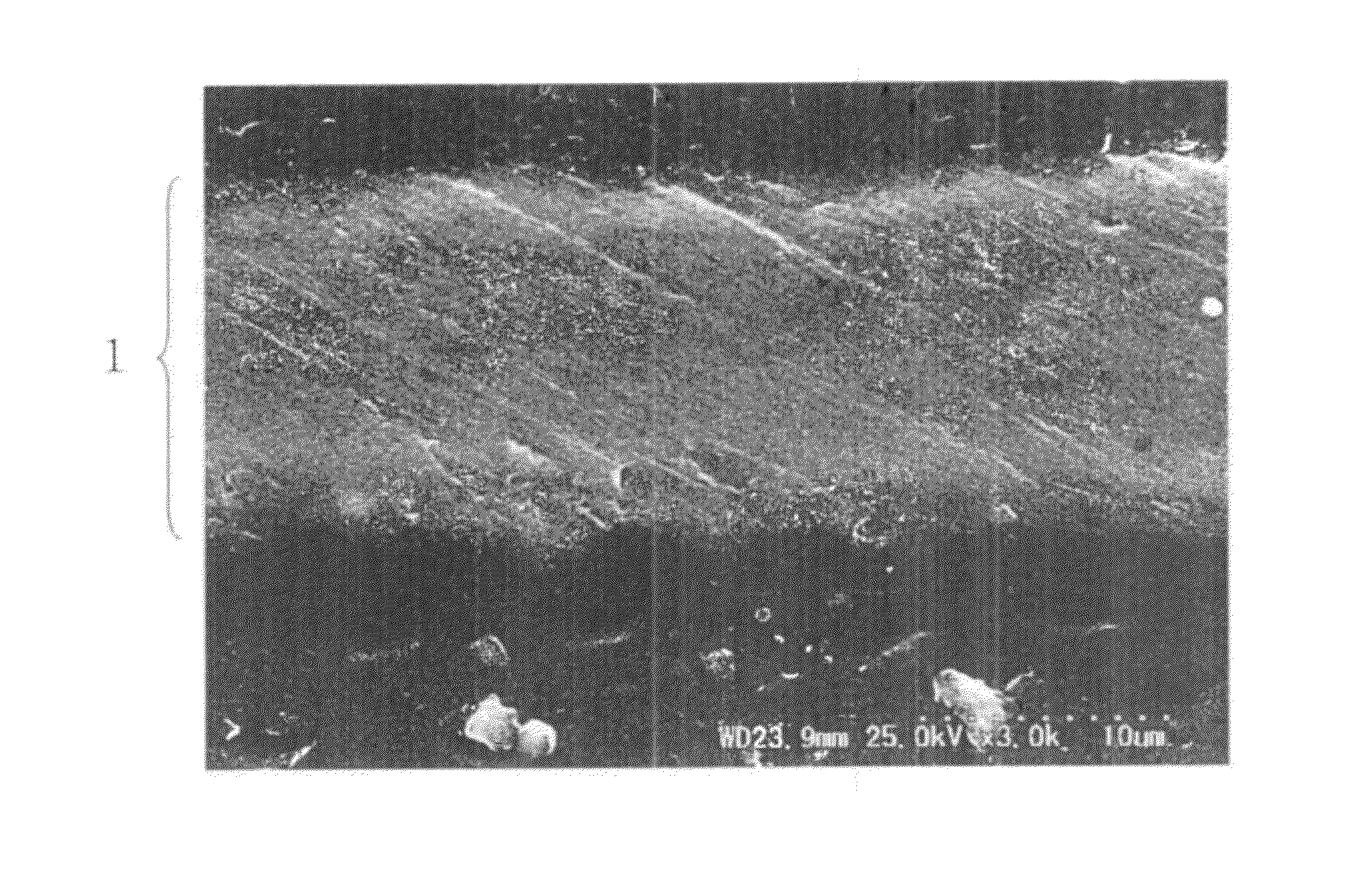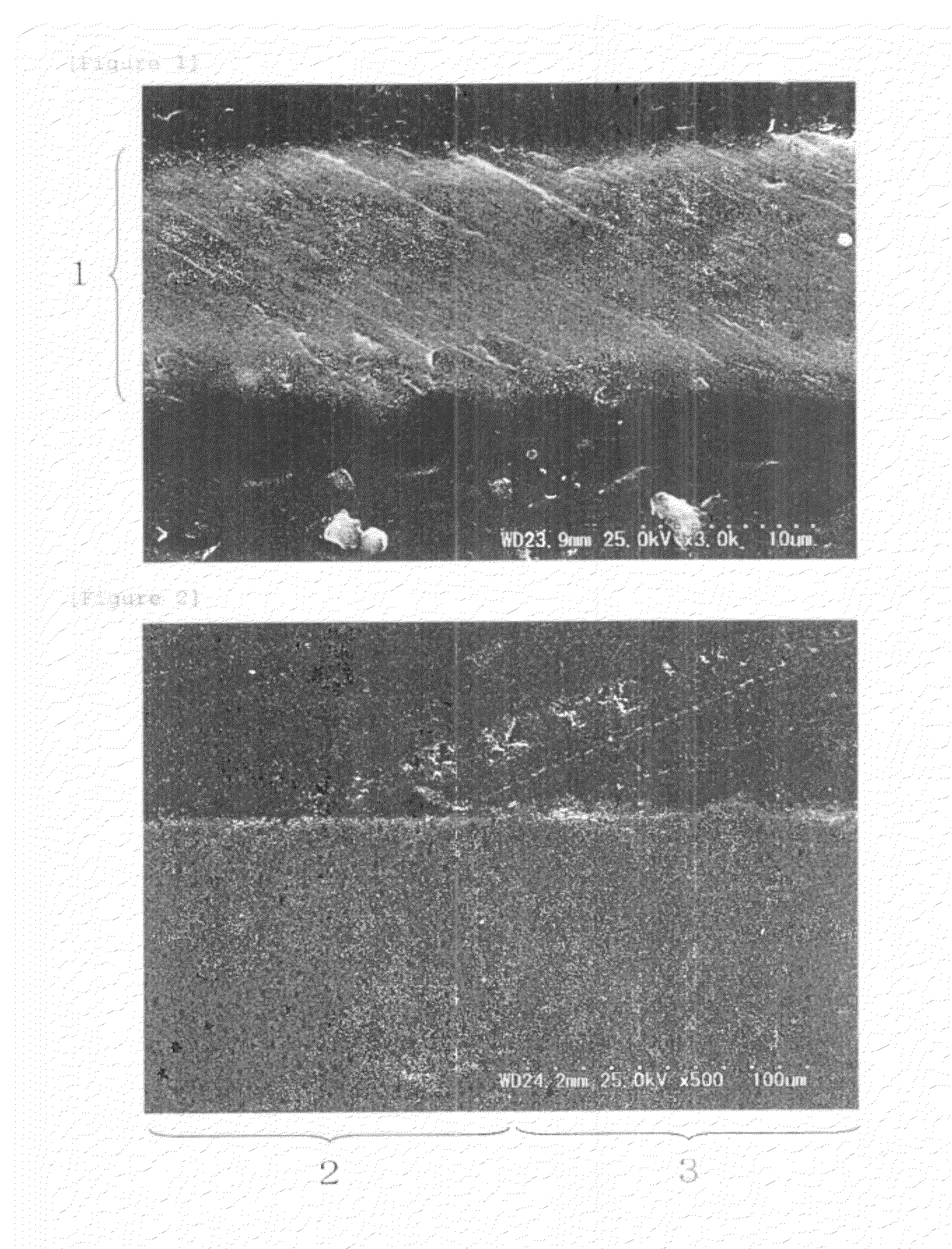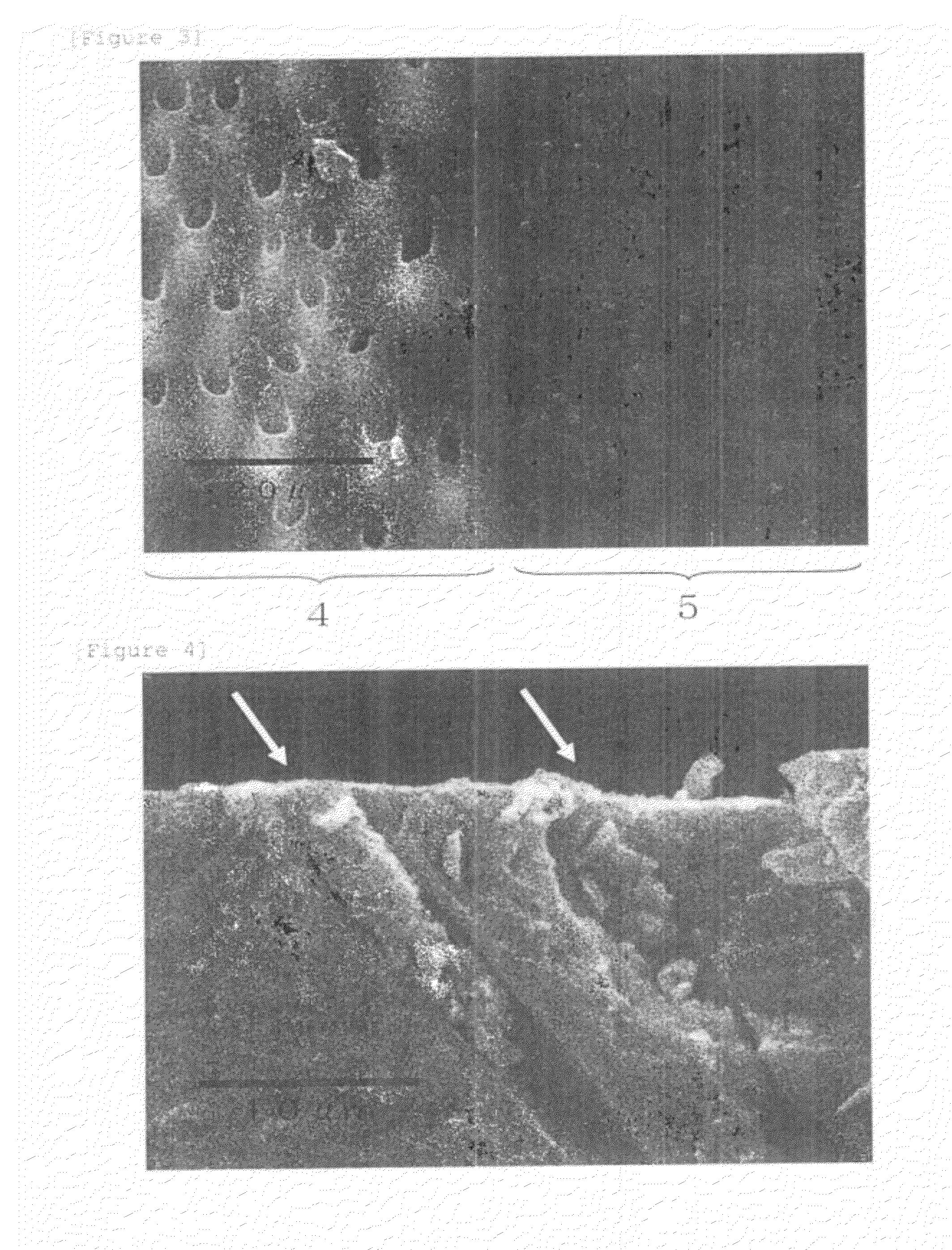Dentin mineralizing agent and method for production thereof
a technology of mineralizing agent and dental enamel, which is applied in the direction of fluorine compound active ingredients, drug compositions, impression caps, etc., can solve the problems of dental enamel exposure due to new dental diseases, wear of teeth, alveolar bone loss, etc., and achieve the effect of reducing caries resistance and treating hyperesthesia
- Summary
- Abstract
- Description
- Claims
- Application Information
AI Technical Summary
Benefits of technology
Problems solved by technology
Method used
Image
Examples
example 1
Preparation of a dentin mineralizing agent
1) Preparation of tetracalcium phosphate particles (A)
[0069]The tetracalcium phosphate particles (A1) (average particle diameter=23.1 μm) to be used in this example were prepared by pulverizing crude tetracalcium phosphate prepared by the following procedures. A cake-like equimolar mixture was obtained by adding commercially available dicalcium phosphate anhydrous particles (Product No. 1430, made by J. T. Baker Chemical Co., NJ) and calcium carbonate (Product No. 1288, made by J. T. Baker Chemical Co., NJ) in equimolar amount to water, followed by stirring for one hour, filtering and drying. The cake-like equimolar mixture was heated in an electric furnace (FUS732PB, manufactured by ADVANTEC MFS, INC.) at 1500° C. for 24 hours, and then a tetracalcium phosphate lump was prepared by cooling the mixture to room temperature in a desiccator. The resulting lump was further ground roughly in a mortar and then screened to remove fine powders and t...
example 2
[0083]A dentin mineralizing agent was prepared in the same manner as in Example 1 except for failing to use the dicalcium phosphate anhydrous particles (C1) and preparing the rest by using purified water in Example 1, and then measurement of an alkali metal ion concentration, morphological evaluation, and dentin penetration inhibition ratio evaluation were performed. The composition of the dentin mineralizing agent used is summarized in Table 1, and the evaluation results obtained are summarized in Table 4.
example 3
[0084]A dentin mineralizing agent was prepared in the same manner as in Example 1 except for preparing it by adding the disodium hydrogen phosphate (B) particles to the paste in liquid form instead of by adding to the powder agent in Example 1, and then measurement of an alkali metal ion concentration, morphological evaluation, and dentin penetration inhibition ratio evaluation were performed. The composition of the dentin mineralizing agent used is summarized in Table 1, and the evaluation results obtained are summarized in Table 4.
PUM
| Property | Measurement | Unit |
|---|---|---|
| average particle diameter | aaaaa | aaaaa |
| average particle diameter | aaaaa | aaaaa |
| particle diameter | aaaaa | aaaaa |
Abstract
Description
Claims
Application Information
 Login to View More
Login to View More - R&D
- Intellectual Property
- Life Sciences
- Materials
- Tech Scout
- Unparalleled Data Quality
- Higher Quality Content
- 60% Fewer Hallucinations
Browse by: Latest US Patents, China's latest patents, Technical Efficacy Thesaurus, Application Domain, Technology Topic, Popular Technical Reports.
© 2025 PatSnap. All rights reserved.Legal|Privacy policy|Modern Slavery Act Transparency Statement|Sitemap|About US| Contact US: help@patsnap.com



